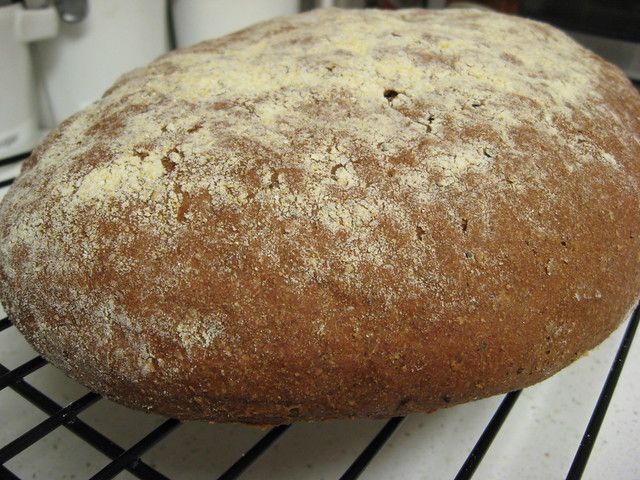The Black Breads Of Little Odessa – The Bite

THE BITE: Many things can be said about the Russian community of Brighton Beach and Sheepshead Bay, but you can’t take away their authenticity. If you don’t get hit by a stroller overflowing with groceries, you’re doing something wrong.
There are over 20 fruit and vegetable stores within a 10-block radius, and that’s a scary thought. Politics and personal opinions about this aside, one of the most unique foods these places offer is a fresh baked hunk of chorniy hleb.
You may know it as rye or pumpernickel, but I assure you, it’s infinitely more complex. Just google a recipe for “Russian black bread” and the ingredient list will surprise you. Fennel, caraway seeds, espresso, cocoa powder, and it doesn’t stop there. Hmm, that’s exactly why I prefer to buy the golden brown crack, er, bread, already made, sliced and ready for me to slather with salo; but more on that later.
There are many varieties, the two most common being Borodinsky and Litovsky. Where the names come from is a bit of a hard case to crack, as much of the available information is just urban legend.
Borodinsky is possibly named after the battle of Borodino, when the Russians fought against Napolean Bonaparte in 1812. It has a strong coriander scent and is sweetened with molasses. Litovsky hleb (bread) is much denser and usually darker. It is chewy and significantly sweet.
Black bread is to a Russian child what I imagine Wonder Bread is to a tot growing up in the states, except it remains flavorful, even as an adult. You better believe the little ones weren’t smothering the fermented sourdough with peanut butter and jelly. Although it’s delicious when eaten warm and adorned with a slick of butter, there are several classic toppings that ring bells in the minds and hearts of former USSR citizens.
Sandwiches are always open-faced, not unlike a Parisian tartine. Hungarian salami is a typical household cold cut, and brings back funny memories for me personally. In elementary school, all the kids who brought butterbrodi (open faced sandwiches) would stink up the classroom upon lunchbox retrieval. Instantaneously, the space could have been confused for an eastern European smoke shop.
Shproti are also a cherished “treat” from the motherland, delicately smoked and drizzled with sunflower seed oil. In case you aren’t familiar, shproti are smoked sardines (which is why I put treat in quotation marks). Traditionally, thin slices of toasted black bread are cloaked with slices of refreshing cucumbers and meaty sardines. It’s an acquired taste.
I’ve saved the best for last. You’ve probably seen it, heard of it, maybe even tried it. I’m referring to salo, a dieter’s paradise. Just kidding, it’s actually a nightmare for anyone trying to watch their cholesterol and/or general health.
Salo is cured pork that is sliced thin and served uber-cold over the chorniy hleb with a pungent scallion to cut through the fattiness. This butterbrod is as Ukrainian as it gets. If you’re not feeling ambitious enough to go and buy the counterparts, head over to your favorite Russian market or restaurant and place your order.
When you feel like getting creative in the kitchen, try making your favorite sandwich and discover all the new flavors that pop out because of this flavorful dough. I recommend a gluttonous corned beef sandwich with cheddar and brown mustard.
Here’s where to go to buy black bread:
- Brighton Bazaar, 1007 Brighton Beach Avenue
- Cherry Hill Gourmet Market, 1901 Emmons Avenue
- Net Cost Market, 2257 East 16th Street
- Sheepshead Bay Fruit & Vegetables Market, 1717 Avenue Z
Until next time, dasvidaniya!
Jane Poretsky is a Sheepshead Bay resident and lover of all things edible. She blogs about her own food creations at Caramelized Sarcasm.
The Bite is Sheepshead Bites’ weekly column where we explore the foodstuffs of Sheepshead Bay. Each week we check out a different offering from one of the many restaurants, delis, food carts, bakeries, butchers, fish mongers, or grocers in our neighborhood. If it’s edible, we’ll take a bite.